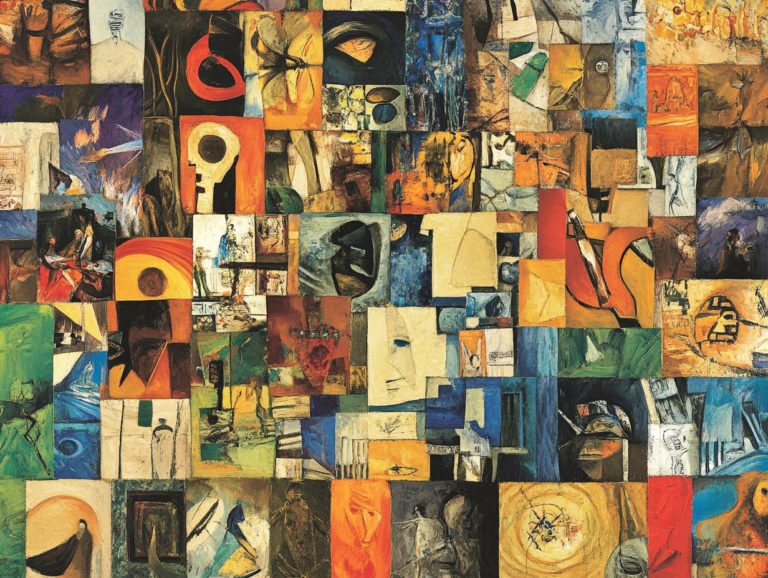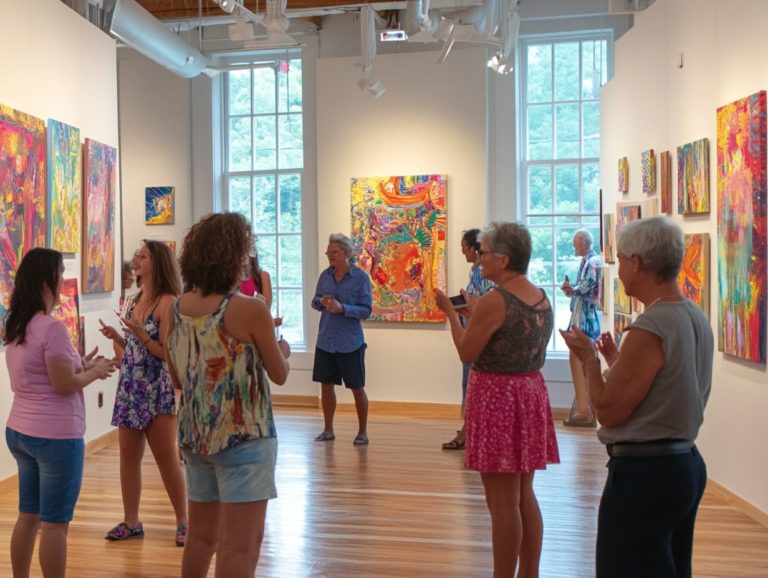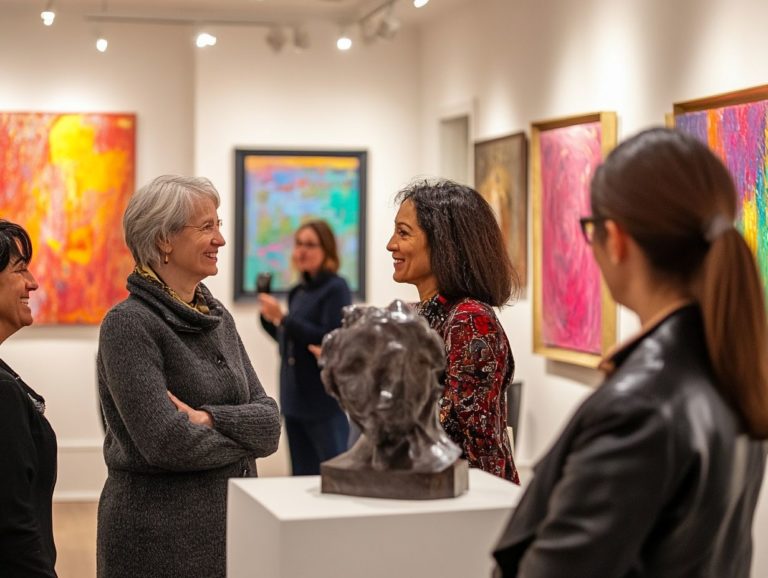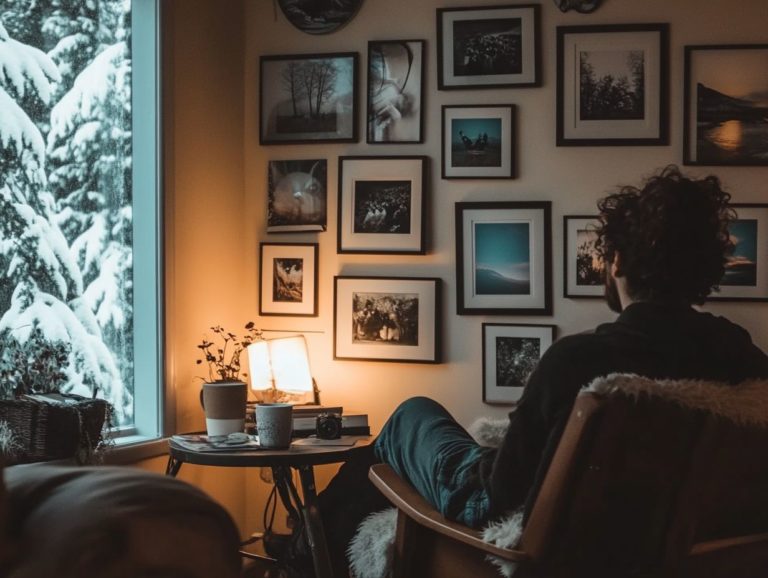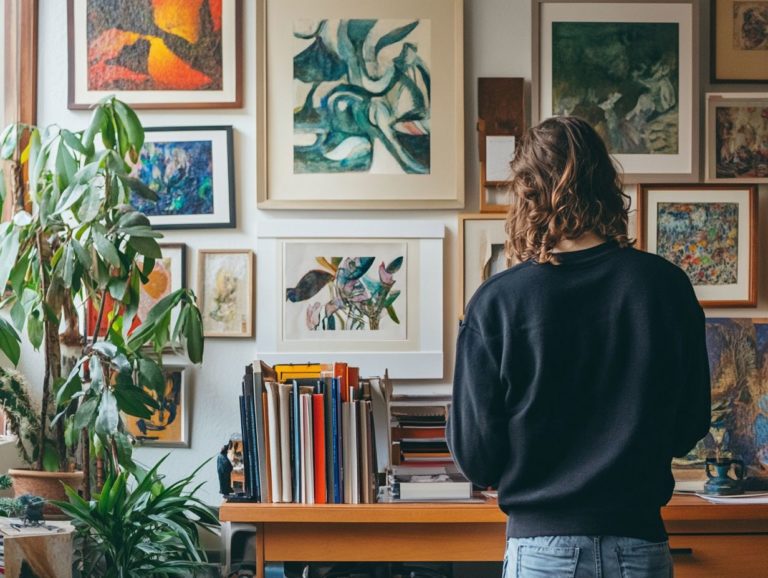Top 10 Art Collecting Tips for Beginners
Collecting art is a thrilling yet daunting venture, especially for those just starting out.
With a myriad of styles, artists, and market dynamics to navigate, it s crucial to approach this journey with both knowledge and strategy.
Whether you are attracted to modern or classic art, grasping the intricacies of the art world can greatly enhance your experience.
This article delves into ten essential tips to help you embark on your art collection journey, guiding you from understanding various styles to ensuring your pieces are beautifully displayed and meticulously cared for.
Get ready for an exciting adventure into the world of art collecting!
Contents
- Key Takeaways:
- 1. Educate Yourself About Different Art Styles and Movements
- 2. Set a Budget and Stick to It
- 3. Attend Art Fairs and Exhibitions
- 4. Start Small with Affordable Pieces
- 5. Consider the Artist’s Reputation and Career Trajectory
- 6. Buy from Reputable Galleries or Dealers
- 7. Ask Questions and Do Your Research
- 8. Don’t Be Afraid to Negotiate
- 9. Insure Your Art Collection
- 10. Display Your Art Properly
- How to Care for and Preserve Your Art Collection?
- Frequently Asked Questions
- What are the top 10 art collecting tips for beginners?
- Why is it important to learn about different art styles and movements?
- Should beginners consider investing in new and upcoming artists?
- How can I determine the long-term value of a piece of art?
- Is it necessary to purchase art from reputable galleries or online platforms?
- How can I take care of my art collection?
Key Takeaways:
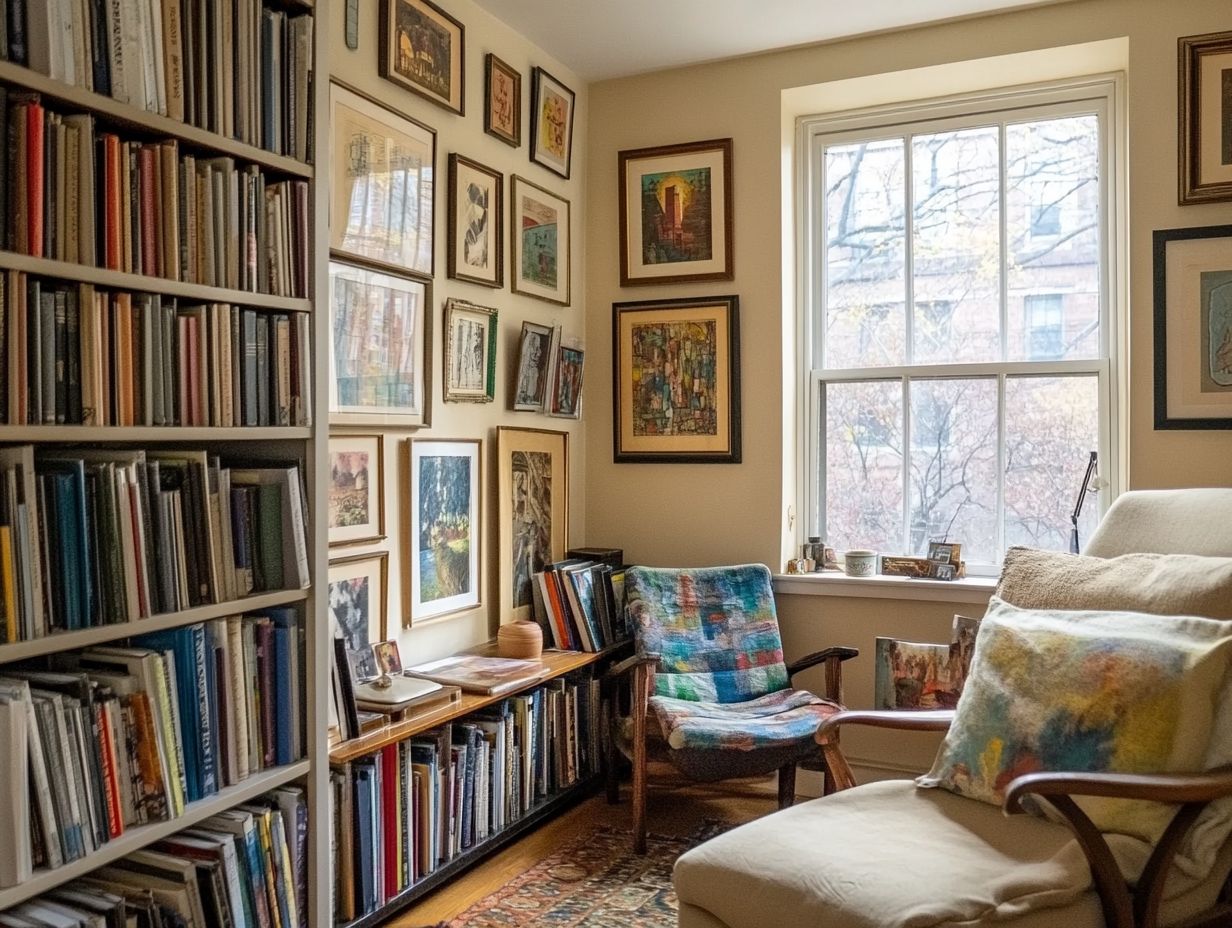
- Educate yourself on various art styles and movements to develop a better understanding and appreciation for art.
- Set a budget and stick to it to avoid overspending.
- Attend art fairs and exhibitions to discover new artists and pieces, and to network with other art collectors.
1. Educate Yourself About Different Art Styles and Movements
Understanding various art styles and movements is crucial for you as an aspiring art collector.
It helps you navigate the vast art world, appreciate different artistic expressions, and make informed choices about your personal collection.
By exploring influential art movements like Impressionism, which changed how we see light and color, or Modernism, with its focus on abstraction, you can deepen your appreciation for pieces that resonate with you.
Notable figures like Thomas Merton, who highlighted the spiritual dimensions of art, or contemporary artists like Jennifer, can inspire you to reflect on how themes shape the visual landscape.
As you embark on this journey, invaluable resources await you through online education platforms and esteemed art museums.
These offer access to lectures, virtual tours, and curated collections designed to enrich your understanding of the art world.
2. Set a Budget and Stick to It
Setting a clear budget for art is essential for art lovers like you who want to navigate the art market with confidence.
This ensures your purchases align with your financial situation while allowing you to focus on acquiring original art that resonates with your artistic vision.
As you consider the immediate costs of acquiring pieces, remember to account for their potential appreciation over time.
This foresight can lead to wiser investment decisions.
Also, be aware of maintenance costs things like insurance and conservation services that can add up and affect your overall profitability.
Regularly monitor the value and condition of your collection to inform future purchases.
This practice helps you find a balance between quality and affordability.
Interacting with local galleries and attending exhibition openings can deepen your understanding of market trends.
Doing so empowers you to take a more informed and strategic approach to building a collection that is both satisfying and valuable.
3. Attend Art Fairs and Exhibitions
Participating in art fairs and exhibitions opens up invaluable opportunities for you to discover emerging artists and engage with contemporary art.
These events act as dynamic platforms where you can immerse yourself in various art forms and styles.
By connecting directly with galleries and artists, you gain insights into current trends and innovative practices that might remain hidden elsewhere.
Art fairs also facilitate networking with fellow collectors, enriching your experience and broadening your perspective.
This not only helps you identify unique pieces for your collection but also deepens your understanding of the diverse themes and genres in contemporary art.
4. Start Small with Affordable Pieces
Starting your art collection with affordable pieces allows you to create a personal collection that reflects your unique taste. This approach minimizes financial risks often associated with acquiring original art.
Focusing on art prints or works from emerging artists enables you to explore a diverse range of styles and mediums without stretching your budget. This makes art more accessible and nurtures a deeper connection with each piece.
As you add these smaller, affordable works to your spaces, you’ll appreciate the stories and techniques behind each creation. Over time, this journey cultivates a greater understanding of the art world and leads to more informed purchasing decisions as your collection evolves.
5. Consider the Artist’s Reputation and Career Trajectory
When purchasing art, considering the artist’s reputation and career trajectory can greatly enhance your investment strategy. Both established and emerging artists offer unique artworks and authentic expressions that shape the art market.
Understanding an artist’s background goes beyond just appreciating their aesthetic appeal. It involves examining their exhibitions, awards, and standing within the art community. By looking into their past and current showcases, you can gauge the demand and significance of an artist’s work.
Collectors who familiarize themselves with an artist s journey develop a deeper appreciation for the art. This positions them to find pieces that resonate with their personal taste while holding or potentially increasing in value. This dual focus allows for a strategic approach to art purchases, blending passion with financial insight.
6. Buy from Reputable Galleries or Dealers
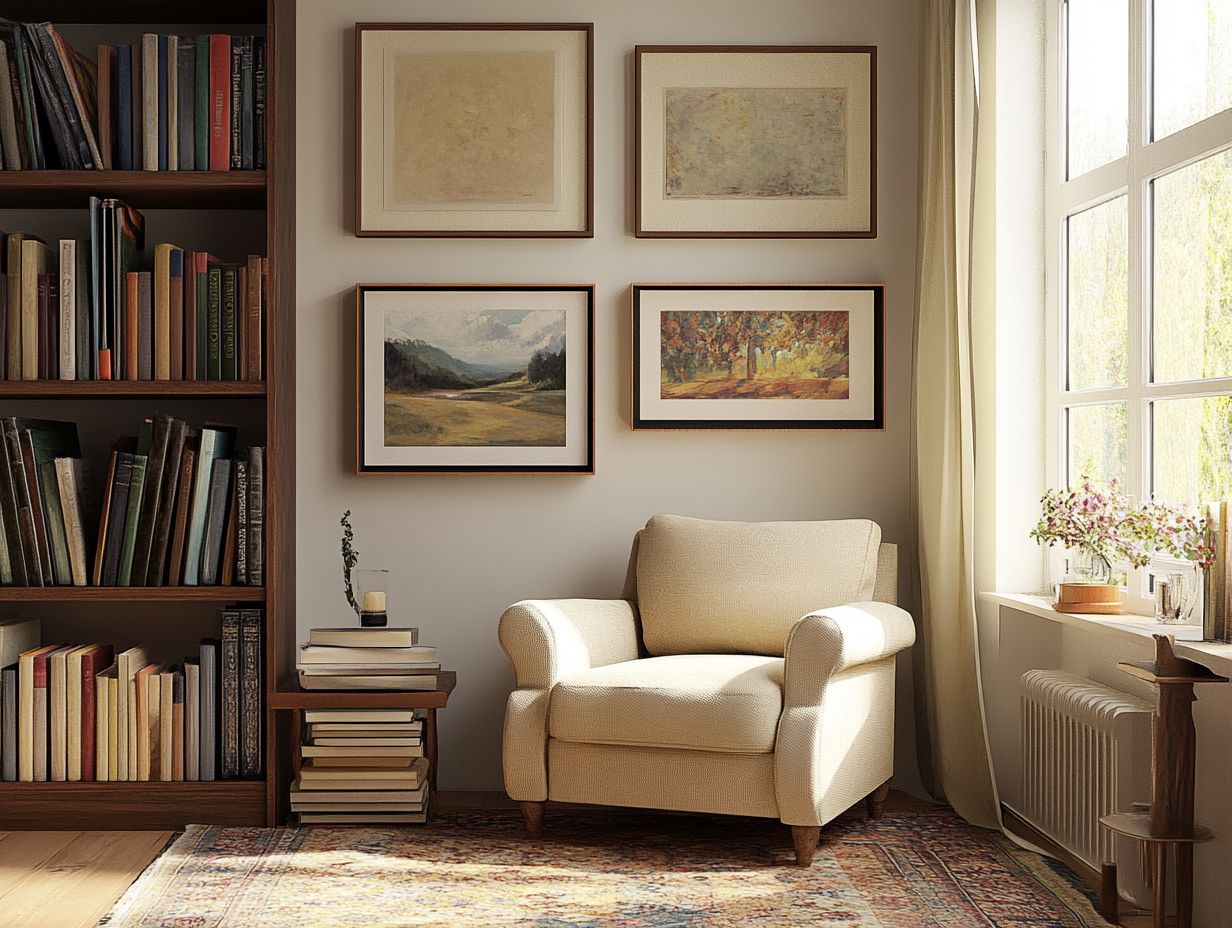
Purchasing art from reputable galleries or dealers ensures you acquire pieces with verified authenticity. This safeguards your investment and elevates the integrity of your art collection in today s competitive market.
To identify trustworthy sources, maintain a discerning eye for consistent reviews and strong recommendations within the art community. Engaging with fellow collectors or art enthusiasts can provide invaluable insights into which galleries or dealers have a positive reputation.
Authenticity is crucial for the value and appreciation of art. When sourced from respected entities, you can feel confident about the quality and history of your pieces. Feeling confident in your art collection makes it even more enjoyable!
7. Ask Questions and Do Your Research
Engaging with the art community by asking insightful questions and conducting thorough research empowers you as an art collector to make informed choices. This approach fosters a deeper appreciation for various art styles and boosts your confidence in investment decisions.
To enhance your understanding, consider utilizing resources such as art consultants who can offer tailored advice, along with online platforms brimming with information on techniques and trends.
Social media is a vibrant tool for connecting with artists and fellow enthusiasts, enabling real-time discussions that enrich your knowledge. By exploring different artistic methods and historical contexts, you can cultivate a more discerning eye.
This journey ultimately leads to selections that resonate personally with you while ensuring enduring value in your collection.
8. Don’t Be Afraid to Negotiate
Negotiating when purchasing art isn t just common; it s essential for aligning your art budget with your expectations. This process helps you secure unique pieces that truly speak to your artistic motivations.
Understanding how to engage effectively with art dealers can enhance your purchasing experience. Conducting thorough research on the current art market, prices, and trends is crucial. Being informed strengthens your position during discussions.
Consider important factors when evaluating the value of art pieces:
- the artist’s reputation
- the medium used
- the piece’s provenance
Showing respect for the artist’s work creates a positive atmosphere during negotiations, leading to mutually beneficial outcomes. This respect increases your chances of acquiring a piece that resonates deeply with you.
Don’t hesitate start a conversation with your dealer today!
9. Insure Your Art Collection
Insuring your art collection is crucial for peace of mind don’t risk losing it! It protects your investment and provides financial security against potential damage, theft, or loss.
By exploring the various insurance options for art collectors, you can tailor your policy to meet your unique needs. You can choose a specialized art insurance company or opt for an extension of your homeowner’s policy.
Accurately valuing each piece is essential. This impacts your premium rates and ensures that you’re fully covered in the event of a loss.
Incorporating art conservation practices, such as climate control and professional restoration, is vital. Climate control refers to special rooms that maintain a steady temperature and humidity.
These practices help maintain the integrity and value of your collection, ultimately contributing to its long-term preservation and appreciation.
10. Display Your Art Properly
Displaying your art properly makes your space look amazing! It also creates a welcoming space that encourages art appreciation and reflection.
The arrangement of artworks plays a crucial role in shaping the mood and narrative of a room. It’s essential to consider factors such as color harmony, balance, and scale.
For example, grouping smaller pieces together can create a captivating focal point. Larger works can serve as striking statement pieces that naturally draw the eye.
Incorporating diverse display techniques, whether shelves, pedestals, or innovative light installations, can elevate your collection.
Thoughtfully curated arrangements invite viewers to experience your artworks in a fresh light. This encourages them to explore deeper meanings and connections that enrich the atmosphere of your home or gallery.
How to Care for and Preserve Your Art Collection?
Caring for and preserving your art collection is essential for maintaining the value and authenticity of each piece. This ensures that your investment remains in peak condition for generations to come.
To achieve this, employ a combination of best practices.
- Proper storage is foundational; utilizing climate-controlled environments protects against temperature and humidity fluctuations that could cause irreversible damage.
- Regular cleaning with the right materials is vital. It prevents dust and dirt buildup that can deteriorate surfaces over time.
Using environmental controls, like UV-filtering glass and controlled lighting, is crucial in safeguarding your artworks from fading and deterioration.
Engaging professionals for regular assessments is vital. Their expertise can identify potential issues before they escalate, helping to preserve the integrity and longevity of your prized pieces.
What Are the Benefits of Owning Art?
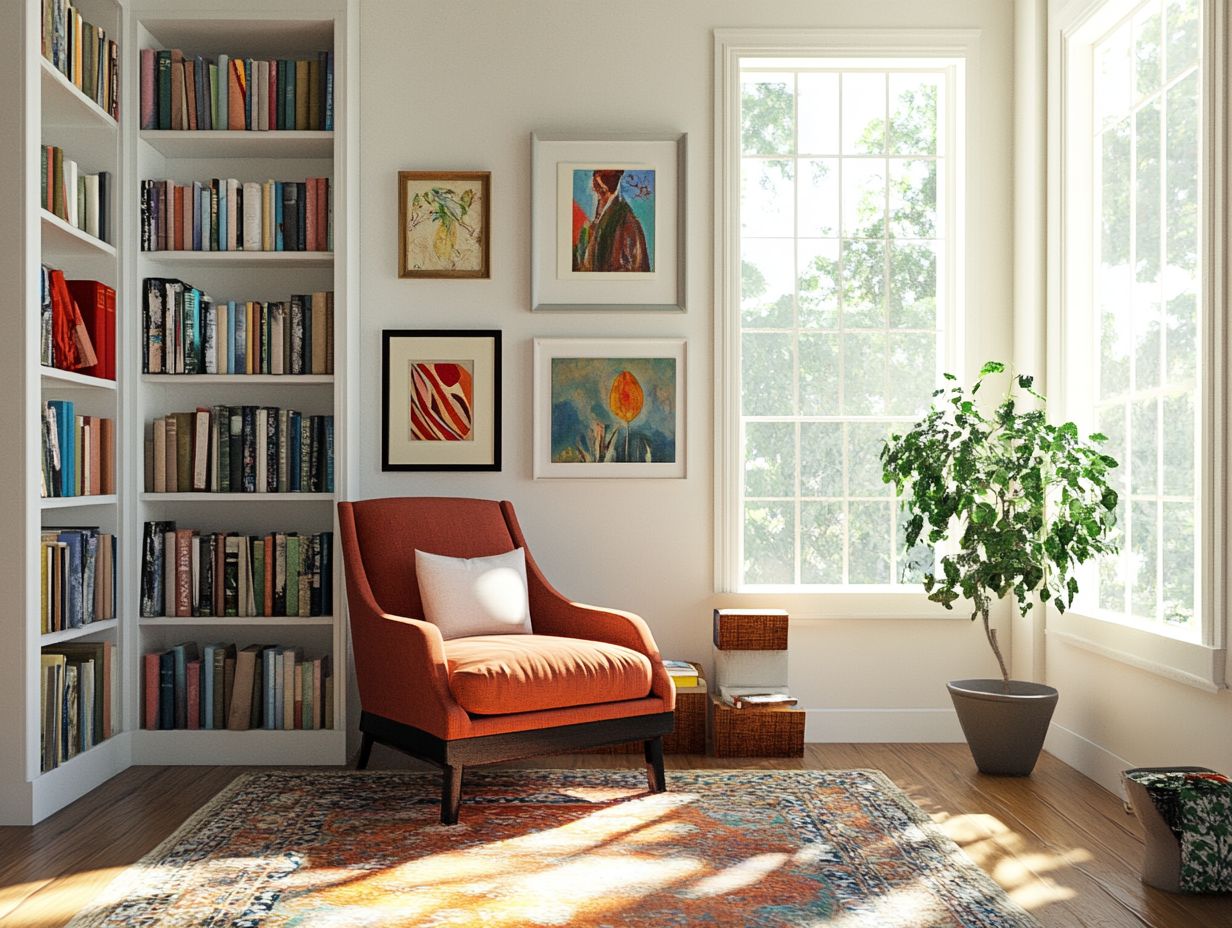
Owning art brings a wealth of benefits, from transforming your living space with distinctive pieces to making wise investments that can appreciate over time. You can nurture both personal enjoyment and financial growth.
Having art in your home cultivates an atmosphere brimming with inspiration and emotional depth. It serves as a daily reminder of creativity and cultural expression.
This visual stimulation can profoundly enhance your mental well-being, uplifting and motivating you with colors and themes that resonate.
Art ownership also serves as a springboard for social interactions. It allows you to connect with fellow art enthusiasts and creators.
This engagement fosters deeper relationships within the vibrant art community. Through shared appreciation, meaningful discussions and collaborations often emerge, creating a supportive network that enriches your personal journey.
How Do You Determine the Value of an Art Piece?
Determining the value of an art piece requires a careful evaluation of several factors, including the artist’s reputation, market demand, historical significance, and the artwork’s condition. All these elements play a crucial role in its potential as an investment.
To accurately assess these elements, you can use different methods, such as professional appraisals and market comparisons. Appraisals by certified experts offer valuable insights into the piece s authenticity and worth. Market comparisons reveal information about similar works that have recently sold in the same category.
As an art collector, you can gain a competitive edge by tapping into resources like auction results, galleries, and online platforms to gather valuable insights. Engaging with art advisors or seasoned collectors can deepen your understanding and guide you toward making informed purchasing decisions that align with your investment goals.
What Are the Different Types of Art Collectors?
Art collectors come in many forms, each driven by unique motivations and goals. Whether you’re an investor focused on financial gain or someone who seeks a deeper personal connection within the vibrant art community, your journey will be distinct.
As a novice collector, you might enter this fascinating world with a sense of wonder. Often, it s the aesthetics or emotional resonance of a piece that captivates you, rather than market trends. Your enthusiasm can be contagious, creating meaningful relationships with emerging artists eager to share their stories.
If you’re a serious investor, your approach may be much more strategic. You carefully analyze market values and potential returns, often leading you to collaborate with established galleries that can elevate your collection.
Then there are thematic collectors, like you, who collect pieces based on specific themes. This approach offers a rich narrative that resonates deeply, allowing you to connect with not just the artwork but also with fellow collectors and artists who share your passions.
How Do You Diversify Your Art Collection?
Diversifying your art collection enhances its visual appeal and mitigates risks associated with investment art. This strategy allows you to explore various styles while supporting emerging artists across different genres.
By seeking out pieces that challenge conventional aesthetics or present fresh perspectives, you can curate works that resonate with your personal taste and reflect broader trends within the art world. Delving into different mediums like photography, sculpture, or mixed media offers a richer array of experiences, making your collection more dynamic.
Supporting emerging artists opens doors to unique storytelling, as these creators infuse their works with novel inspirations that can elevate your collection. Investing in lesser-known talents not only fuels creativity and innovation but also fosters a sense of community and shared passion within the art ecosystem. Get involved now!
What Are the Potential Risks of Art Collecting?
Art collecting is an exciting adventure that can lead to amazing discoveries, but it also comes with its share of risks, including market fluctuations, authenticity challenges, and the financial consequences of a misstep in investment art.
To navigate these potential pitfalls, you need to maintain a sharp awareness of market trends, which can change drastically due to factors like economic conditions and cultural shifts.
Ensuring the authenticity of your pieces is crucial; without proper verification, you might unwittingly acquire forgeries or artworks with misattributed origins. Knowledge and diligent research are your best allies, enabling you to make informed decisions.
By keeping yourself updated on the latest developments in the art world, especially regarding valuation and provenance (the history of ownership of an artwork), you can boost your confidence and elevate your art collecting experience from a mere hobby to a strategic investment.
Frequently Asked Questions
What are the top 10 art collecting tips for beginners?
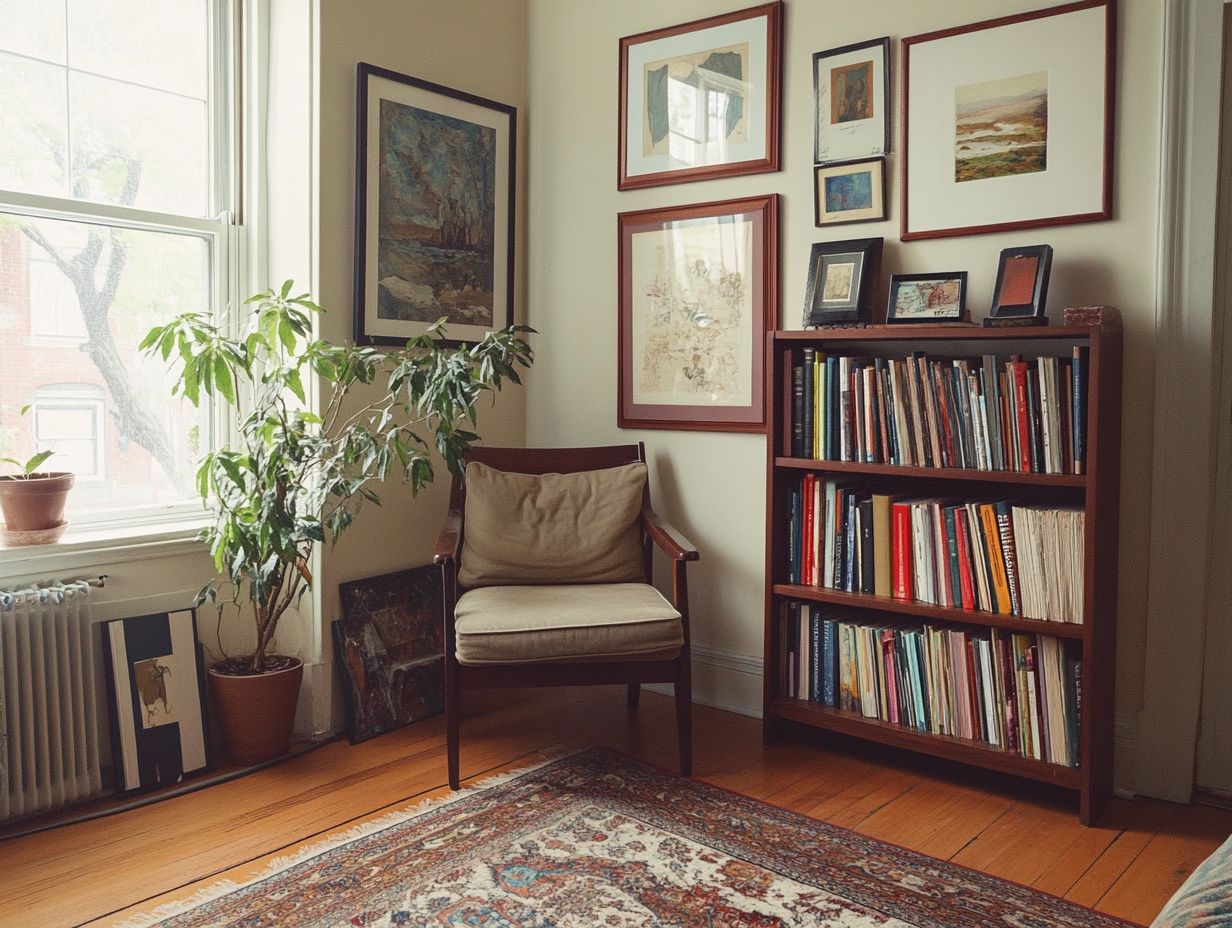
The top 10 art collecting tips for beginners are:
- Learn about different art styles.
- Start small with affordable pieces.
- Visit local art events to find new artists.
- Explore exciting opportunities with new artists!
- Set a budget and stick to it!
- Don t hesitate to negotiate prices.
- Buy from trusted galleries or reputable online platforms.
- Think about the long-term value of the art.
- Trust your taste and preferences.
- Care for your collection and document your purchases.
Why is it important to learn about different art styles and movements?
Learning about art styles helps you make smart choices when buying pieces. You’ll appreciate the value and meaning behind the art, shaping your personal taste.
Should beginners consider investing in new and upcoming artists?
Yes! Investing in new artists can be a great opportunity for beginners. Their works are often more affordable and can increase in value over time.
How can I determine the long-term value of a piece of art?
To gauge the long-term value, consider the artist’s reputation, past sales, rarity, and the artwork’s condition.
Is it necessary to purchase art from reputable galleries or online platforms?
Buying from trusted galleries or reputable online platforms provides a sense of security regarding the authenticity and quality of the artwork. It s also crucial to do your own research to ensure the seller is legitimate.
How can I take care of my art collection?
Protect your art by storing it properly and displaying it away from direct sunlight and extreme temperatures. Keep track of purchases and ensure you have insurance for your collection!

